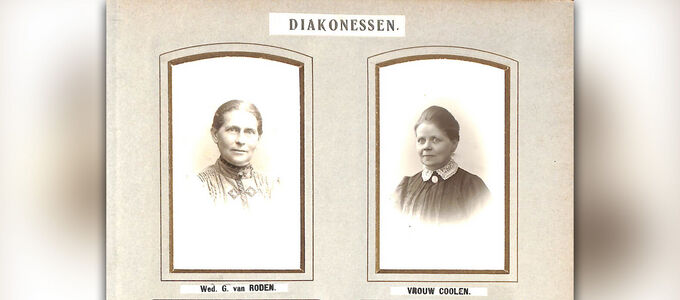
Did the New Apostolic Church really ordain only men as ministers until last year? What about the Deaconesses who were active in Europe, America, and Africa for a period of eighty years? Here are some facts and figures to give an initial picture.
Karoline Rosine Pfänder was a self-confident, energetic, and successful business woman. Born in Germany in 1874, she advanced to the position of head designer of Wilhelm Bleyle oHG in Stuttgart, Germany. As a senior executive, she was responsible for designing fashion collections in a rapidly growing company with a turnover in the millions and several thousand employees.
The records of the New Apostolic congregation of Stuttgart-West do not only contain the date of her sealing in the column “Sealing”, but there is also an entry under the heading “Ordination”. On 12 December 1909 she was installed as a Deaconess by Apostle Johann Gottfried Bischoff. And this was anything but an isolated case.
More than an exception
There are no consistent statistics on the number of Deaconesses. But the sources at least give us an idea. The first church records from 1897 show that in addition to thirty male ministers, six women were active as Deaconesses in the three Berlin congregations at the time.
The Netherlands had the most Deaconesses. This is confirmed by a photo album that Chief Apostle Hermann Niehaus received in 1906 as a birthday present from Apostle Jakob Kofman and his fellow ministers: it contained a total of 150 portraits, 19 of which were of women.
Deaconesses also in Africa and America
This is not just a European phenomenon. For example, the church magazine Der Herold reports on a visit by Apostle Gustav Ruff to the USA in 1900, where he appointed a Deaconess. The Neuapostolische Rundschau (New Apostolic Review) mentions three such appointments alone by Apostle Carl Georg Klibbe in South Africa in 1909.
And then there was Apostle Heinrich Franz Schlaphoff, who was active as Assistant Chief Apostle for the southern hemisphere from 1933. He carefully noted down his official acts in his diary. Between 1934 and 1940, a total of 17 Deaconesses were appointed—not only in South Africa, but also in South America.
An end without apparent reason
From 1928 onwards, however, the number of Deaconesses in Germany decreased noticeably. After the Second World War, there was also a significant decline in the Netherlands. The last Deaconess in Germany appears in the statistics for 1955. And in the Netherlands, the last time that two Deaconesses appear in the records is 1959.
Today, we can only speculate about the reasons for this development. Reasons for this have not yet been found in New Apostolic literature. What is striking, however, is that there were some regions where Deaconesses were never appointed. Were there reservations about women there?
Ordination or mandate?
There are, however, other aspects that are relevant regarding the question of the ordination of women. For example, what were the tasks of Deaconesses in the New Apostolic Church? And were they merely commissioned or were they ordained like other ministers? For answers we will have to delve a little deeper into history because Deaconesses are a legacy of the Catholic Apostolic Church. This is what we will look at in the next part of this series.
This article is based on a publication by the History Workshop Stuttgart and on previously unpublished material by Manfred Henke, a historian. He is working on an academic work on the history of the New Apostolic Church.


















